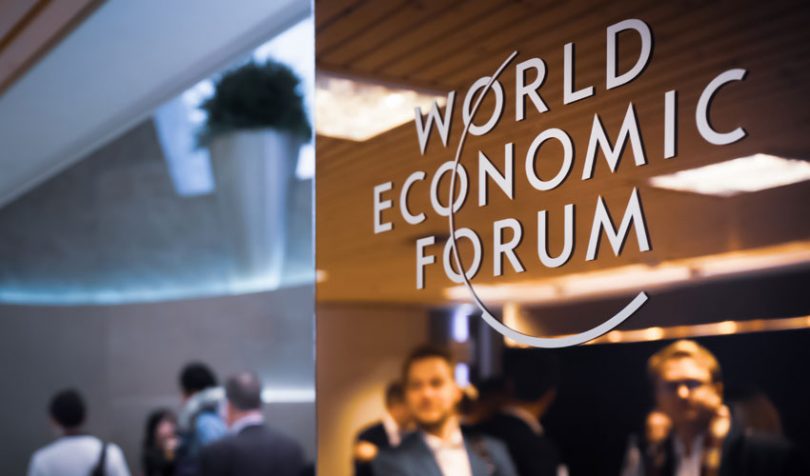On Tuesday the World Economic Forum (WEF) released a research paper for businesses wanting to adopt blockchain. Titled “Building Value with Blockchain Technology”, the framework addresses the need for blockchain and how to evaluate and implement the technology in specific markets. The paper was produced in conjunction with Accenture and is in part the result of a global survey of 550 people.
Building on their previous paper titled “Blockchain Beyond Hype“, the WEF talks about how the technology in itself is just a tool for maximizing business and not an end goal. The WEF says blockchain should be part of a strategic change. Business models need to be reimagined, and relationships require a rethink, both with other companies and with customers.
According to WEF, it is estimated that worldwide spending on blockchain solutions will be $2.9 billion in 2019, before surging to $12.4 billion in 2022. Of those implementing blockchain, 68% are spending more than $1 million, with 27% spending more than $10 million. Meanwhile, over 67 percent of US companies are either deliberating the technology’s application or have already started its implementation. When asked, most of these companies attributed the adoption of blockchain to innovation and ranked new products and services at the bottom. This clearly shows that businesses are looking to maximize existing products and services before considering investing in new opportunities.
For executives, blockchain is a data-sharing mechanism with transparency in transactions. Increased efficiency was the key point when WEF spoke to top managers of companies implementing blockchain. Another aspect these executives stressed is that the adoption of such a technology will drive innovation around both the product and processes, as external data will become more trustworthy.
“Blockchain is a database architecture technology and, in particular, provides the ability for anyone to build applications on top of a common infrastructure that could be reusable from one customer to the next. Once you’ve created this shared source of truth through this technology, you also then create the ability for cross-organization workflows to be dramatically simplified,” said Peter Hiom, Deputy CEO of Australian Securities Exchange (ASX).
The paper is primarily a guide for businesses to assess the value when contemplating the application of blockchain. The three value dimensions which stand out in this paper are – improving productivity and quality; increasing transparency among parties; reinventing products and processes. So any use case can be evaluated based on these benefits.
However, obstacles remain as many organizations expect a higher return on their investment (average 24%), and have been disappointed by the results (10%). The paper stresses the need to move beyond the proof-of-concept (POC) and bring in the stakeholders to better understand the market.
“The whole point of doing blockchain is it’s a team sport,” Christopher G. McDaniel, President of the Institutes RiskStream Collaborative (RiskBlock), explains. “If you’re trying to do it on your own, maybe that’s OK from a proof-of-concept standpoint, but if you ever want to get real production value, you have to join with others. Otherwise, there’s no point.”
Of course, there are several challenges with the implementation of blockchain such as scalability and interoperability, and technology analysts say it’s still in a nascent stage. Blockchain competes with other technologies which may be capable of delivering shorter-term returns. But blockchain may have additional longer-term benefits which should also be evaluated.
Add to this, the concerns raised by decision-makers who believe new technology to be successful will require expertise within their teams which they may lack. The apprehensiveness stems from the shift from a centralized to decentralized business architecture. “If they’re not ready, if they’re not experts in this technology, then a new set of middlemen are likely to step in, extracting their monopoly rents for intermediating there,” said Chris Ballinger, Chief Executive Officer of Mobility Open Blockchain Initiative (MOBI).
Also, nobody wants to miss out on an early-mover value to capture the market. As David Rutter, Founder and Managing Partner of R3, points out, “If they’re not looking at blockchain now, and applications are going live in their industry, they could be disadvantaged in a pretty big way as they try to play catch-up.”







